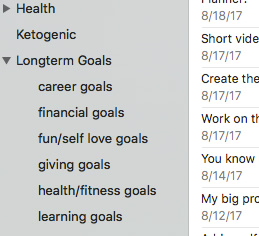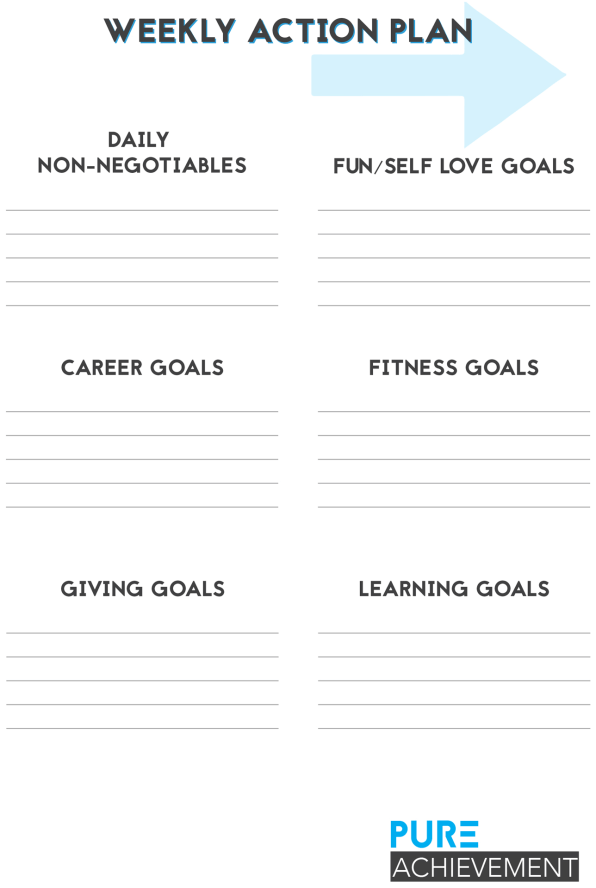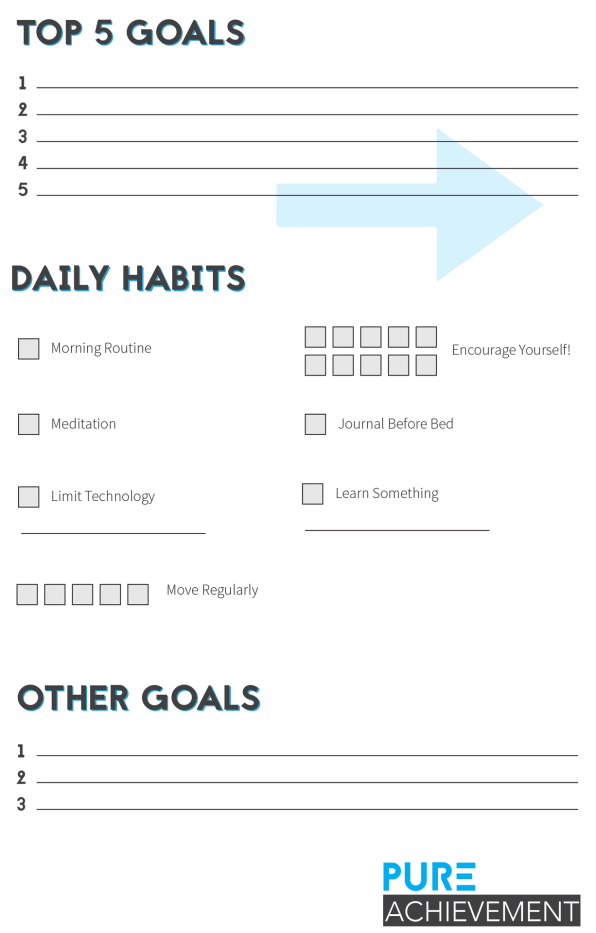I coach CEOs, executives, HR managers, doctors, lawyers, and tech consultants–all busy people, many of whom can’t stand planning. But you won’t find me brushing up on Japanese business philosophy or fiddling with century-old planning templates in order to help my clients out. I’ve found that daily planning from a weekly action list is all it takes to keep them on track for the long haul.
This “hebdomadal” model (feel free to Google that!) is the simplest form of long-term planning–meaning even people who hate long-term planning can usually manage to stick with it.
If you spend enough time masterminding your weekly action plan, usually 10-30 minutes, you can condense bigger goals into doable directives that can be accomplished on a day-to-day basis, while still having a clear sense of the ground you’ll have covered by this time next week. This gives you the benefits of longer-term planning without the tedium of scheduling more brainstorming sessions and drafting out more plans. Plus, a weekly approach avoids the frustration of planning out a whole month only to have family and work exigencies spin you in a new direction unexpectedly.
So if you’ve had mixed results with other forms of planning, this weekly planning scheme is your ticket to consistent balance and achievement. Here’s how to master it.
STEP 1: START TRACKING YOUR LONG-TERM GOALS
Most of us know in general terms what we should be focusing on week-to-week, but we’re often hard-pressed to say exactly what those things are when we’re put on the spot or when unpredictable work crises arise. To make those items clearer and ever-present, you need to zoom out a bit and keep a running list of your long-term goals–the stuff that doesn’tautomatically get chipped away at in the course of a normal workweek.
All you have to do is create a “parent” note tab in whatever note-taking app you use. Label it “Long-term Goals.” This is for anything you think of that can’t realistically be accomplished today or in the rest of this week. The next step is to create sub-tabs for areas that are relevant to you. Most people’s will fall into a few common categories like career goals, health/fitness goals, fun/self-love goals, financial goals, learning goals, and giving goals: “drop 10 pounds,” “visit Spain,” make a budget, “learn Spanish,” “help out with the PTA fundraiser.”

This way, whenever you have a spark of inspiration throughout your week, you can immediately catalog it in the appropriate tab. You’ll be surprised at how many incredible goals you actually write down that would otherwise slip through the cracks and get lost forever.
The end result of this note-taking system is that it gives you ample fodder for meaningful items to include in your weekly planning session–where you’ll make sure to clear time for the things that actually matter to you in the grand scheme.
STEP 2: COMMIT TO A “MASTERMIND” SESSION EACH SUNDAY
Grab an old legal pad lying around or, better yet, buy a blank sketchbook or journal explicitly for the purpose (and yes, paper works best here). Then sit down once a week–ideally over the weekend, when work is less likely to interrupt–to do some “mastermind” planning.
For 10 minutes to half an hour, comb through your notes tabs, and brainstorm action steps you can realistically accomplish over the course of a day or two during the upcoming week. It’s dead simple. To give this process a little more structure, follow the same subheadings in your notes app, adding a sixth for daily stuff you won’t be able to avoid:
- Daily Non-negotiables
- Career
- Fun/Self-Love
- Health/Fitness
- Learning
- Giving

With each new mastermind session, you’ll want to review your action list from the week before, seeing what you crushed, what held you back, and how you’ll improve your results for next week. This helps you keep coming up with relevant action steps week after week that take you ever closer to your long-term goals.
STEP 3: REFER TO YOUR WEEKLY LIST WHEN WRITING TOMORROW’S TO-DOS
Every morning, or every evening before bed (many of my clients prefer to do their daily planning after a nighttime journaling session), spend a couple minutes reviewing your weekly action list from the previous weekend, and transfer the most relevant goals over onto your daily to-do list–which should now be a whole lot easier to write.

Make sure your daily plan includes up to your top five most urgent items to accomplish that day; any less-pressing or less-realistic tasks can go at the bottom of your list, just in case you manage to get to them. (After all, stuff like laundry and getting pet food needs to be done, too.) Pro tip: It helps to include some additional “tasks” geared around cutting distractions, like limiting social media, email, and texting on a particular day, or even for just a few hours one morning. After all, if you don’t plan to avoid wasting time on Instagram, you’re all but guaranteed to waste time on Instagram.
. . . I’m sorry, were you expecting more? This is it! Effective daily planning is the easiest thing in the world when you’re drawing to-dos from a definitive, well-balanced list of weekly accomplishments. Cheers to your new hebdomadal planning success!
Originally published at Fast Company

